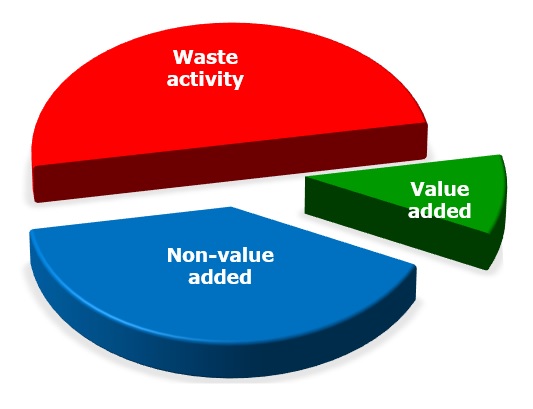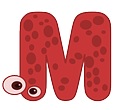Walk the waste – Start the journey to Lean
The Waste Walk gives you the chance to identify and remove the ‘8 Wastes’ of Lean, which will vastly streamline your operations.

In the beginning…
We need to talk about waste activity, starting with an appreciation of the scale of waste in our working lives.
It can be up to 95% of everything we do!
Think of all the irritations we have – waiting for someone to respond to us, dealing with the problems that arise all the time, juggling priorities and our time so we can do our work. Then there are the errors and failures that occur…
Lean techniques like the Waste Walk give us the boost needed to concentrate on only those things that create value for our clients – all else is waste.

Explore the 3 types of activity in your workplace
All around a workplace there is waste activity going on – it uses up so much of our time and our energy.
Only a very little of our time is spent in actually creating value for our clients.
These are the 3 types of activity in any workplace:

Value-added activity
What activities do you undertake that add value to the services and/or products you provide to your clients? Only think about what your client wants from that activity.

Non-value added activity
This is activity that must be done to keep your workplace functioning but does not add value for the client. Think about overheads – fundamental activities for us all, but we must find ways to reduce the non-value adding activities in terms of time, effort and cost.

Waste activity
This is where an activity is simply waste. It could be something “we’ve always done” or “we’ve always done it this way”. However, what is needed is a ruthless, even brave approach to say it is not acceptable any more, and work out ways to eliminate the activity.
The 8 Wastes
We have seen that there are 3 types of activity, the third of the activity types is waste: it does not create value for the client.
The designer of the Toyota Production System, which became Lean, was Taiichi Ohno.
He identified seven wastes originally, to which an eighth was added later.
These wastes are usually known by the acronym TIMWOODS:

Transportation
This waste is about the unnecessary movement of people, products and information. This might apply, for example, if people have to travel to a meeting from various parts of the country when an online meeting would suffice.

Inventory
This waste occurs when you have an excess storage of items or documents. For instance, filing cabinets may become crammed full of documents, many of which are no longer needed. The same waste applies to excess storage of documents online.

Motion
This is simply about unnecessary movements by people. For example, it may have become routine for people to go up a flight of stairs to fetch something and then return downstairs. Repeated again and again, this can be seen as a preventable waste.

Waiting
Time is wasted when waiting for the next process step. This might be when you send an email or text, then have to wait – interminably – for a reply. You might even have to chase people up so that you can do your job!

Over-production
Producing more than is immediately required. For instance, where cheap meals of perishable foods are provided for people in need, staff may produce far too many meals in good faith, with the result that a lot of food has to be thrown away.

Over-processing
Over-engineering, producing higher standard of support or product than is required. This may happen if a client needs to learn how to do something and you enrol them on an expensive course when all they needed was a simple guidebook.

Defects
This is one of the major wastes in any workplace – the effort required to do rework or to correct flawed information.

Skills under-utilization
This is the under-utilization of people’s experience, skills or knowledge.